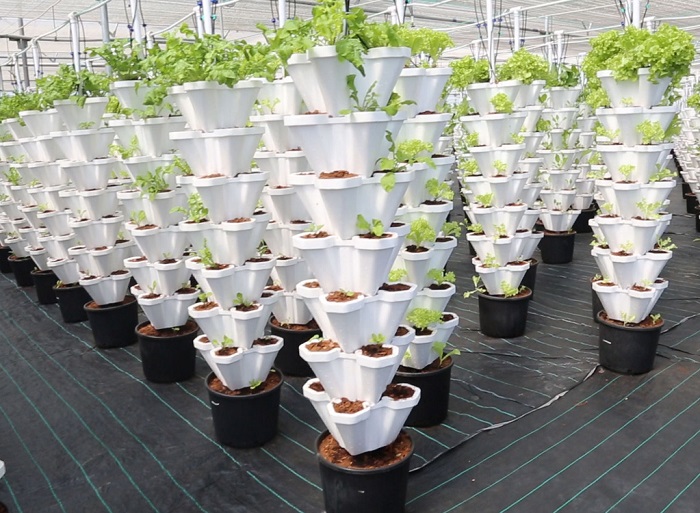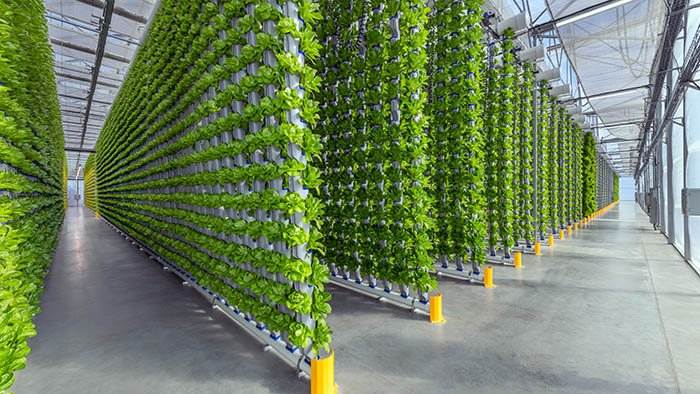
Vertical Farming: The Agricultural Revolution of the Future
The advent of vertical farming technology marks a transformative era in agricultural practices, heralding a future where food production is more sustainable, efficient, and less dependent on environmental conditions. This comprehensive review delves into the origins, purposes, applications, and potential of vertical farming, offering insights into its revolutionary impact on global food production.
What Kind of Technology Is Vertical Farming, and Who Invented It?
Vertical farming is an innovative approach to agriculture that involves growing crops in vertically stacked layers, often incorporating controlled environment agriculture (CEA) technology to optimize plant growth. This method uses indoor farming techniques such as hydroponics, aeroponics, and aquaponics to cultivate plants without soil, maximizing space and resources. The concept of vertical farming was popularized by Columbia University professor Dickson Despommier, who, in the early 2000s, envisioned skyscraper farms as a solution to the growing concerns of food security and urban sustainability.
Since its conceptualization, vertical farming has evolved from a futuristic idea to a practical solution being implemented worldwide. Innovators and companies across the globe have taken Despommier’s vision further, creating technologies and systems that make vertical farming a viable alternative to traditional agriculture.
What Is Its Main Purpose?
Sustainability and Resource Efficiency
The primary goal of vertical farming is to produce food in a more sustainable and resource-efficient manner. By utilizing vertical space, these farms significantly reduce the land footprint needed for crop production. Controlled environments also mean less water usage, minimal use of pesticides, and the ability to recycle nutrients more effectively than in open-field agriculture.
Year-Round Crop Production
Another key objective of vertical farming is to enable year-round crop production, regardless of external weather conditions. This constant production cycle can help stabilize food supplies and prices, making fresh produce more accessible to urban populations.
Reducing Food Miles
Vertical farms are often established in or near urban centers, drastically reducing the distance food travels from farm to consumer. This not only ensures fresher produce but also lowers carbon emissions associated with transportation, aligning with goals for a more sustainable food system.
Where Is It Already Used?
Vertical farming technology has been adopted in various parts of the world, from Asia to North America and Europe. Countries like Singapore, Japan, and the United States have seen a significant rise in vertical farming operations, driven by the need to overcome limited arable land, water scarcity, and the challenges of feeding growing urban populations.
In these regions, vertical farms produce a variety of crops, including leafy greens, herbs, and small fruits, supplying local markets with fresh, sustainable produce. The technology has also found applications in educational institutions and research facilities, where it serves as a tool for studying plant biology and agricultural innovation.
Commercial ventures and startups have been at the forefront of expanding vertical farming, experimenting with different models and technologies to enhance yield, efficiency, and profitability. Their success stories have inspired a global movement towards adopting vertical farming practices in both developed and developing countries.
Where Else It Can Be Used
Beyond urban centers, vertical farming has potential applications in remote and arid regions where traditional agriculture is challenging. These systems can provide a source of fresh produce in desert communities or isolated areas, improving food security and reducing reliance on imported goods.
Furthermore, vertical farming could play a crucial role in disaster relief operations, offering a rapid means to produce food in areas affected by extreme weather events, wars, or other crises. The ability to deploy modular, scalable farms could transform emergency response strategies, providing sustenance and stability in times of need.

If Used in Space
Vertical farming holds promise for space exploration and colonization efforts, where efficient use of space and resources is paramount. NASA and other space agencies are exploring the technology as a means to grow food on spacecraft and extraterrestrial bases, potentially supporting long-duration missions and human settlement on the Moon or Mars.
By replicating Earth-like conditions through controlled environment agriculture, vertical farming could enable astronauts to cultivate fresh produce, enhancing nutrition and well-being during space missions. This application underscores the technology’s versatility and potential to support human life in extreme environments.
Is It Worth It?
The investment in vertical farming technology is justified by its numerous benefits, including increased crop yields, conservation of resources, and the ability to circumvent traditional agricultural limitations. As the technology advances and becomes more cost-effective, its adoption is expected to rise, contributing to a more resilient and sustainable global food system.
Challenges such as energy consumption and initial setup costs are being addressed through innovations in LED lighting, renewable energy integration, and automation. These developments are making vertical farming an increasingly attractive option for entrepreneurs, investors, and governments alike.
In conclusion, vertical farming represents a pivotal shift in agricultural practices, offering solutions to some of the most pressing environmental and food security challenges of our time. Its expanding implementation across the globe signals a promising future for sustainable, efficient, and resilient food production.
